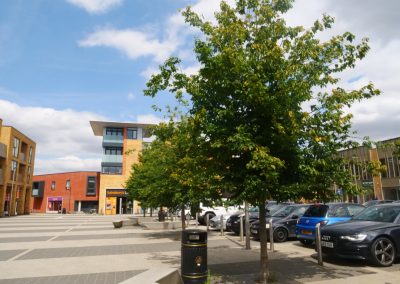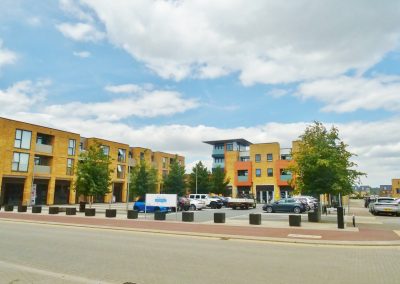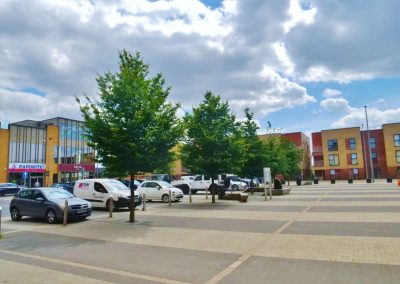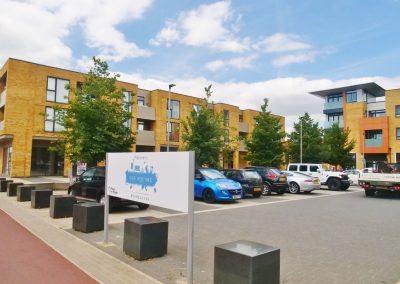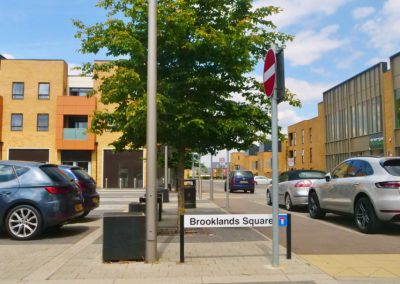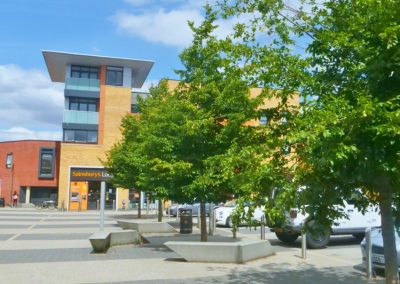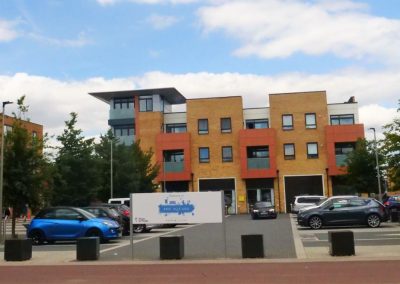Project Details
Project
Brooklands Square
Location
Milton Keynes, England
Date
September 2022
About The Project
We are losing trees at an alarming rate; in the UK alone, we lose about fifty urban trees every day, either through disease, old age, or the relentless increase of urban sprawl. With a rapidly expanding population there’s not much we can do about the urban sprawl. We can however make sure we put greening objectives to the forefront of any new urban development.
Brooklands is a major new district within the Eastern Expansion Area of Milton Keynes, comprising of approximately 2,500 new homes. As part of this larger area, the £13M Brooklands Square project has been designed as a mixed-use development, with a modern interpretation of the traditional tree-lined market square forming the heart of the new development.
The apartments, leisure centre, and retail units overlook the new market square with public parking at the front, and a landscaped parking courtyard at the rear, all within a very short walk to the open space of Lautier Park
Talbot Farm Landscapes were chosen for their knowledge and experience, to ensure that the landscape architecture worked in harmony with the built architecture.
HG Construction have worked on nine previous Scape buildings, with a tenth at Leeds under construction. The emphasis on aesthetics and quality runs through the outside areas too, with a cool palette of soft greys, white and dark bronze cladding offset by stylish columnar silver birch trees, providing a clean, inviting look.
What we did
Talbot Farm Landscapes asked Green-tech Specifier to provide an urban tree planting solution that enabled trees to be planted, and thrive within the hard landscaping, in this case the Market Square car parking area. Planting trees in a vehicular environment is always a challenge as we need a way to prevent the soil in the tree pits from becoming too compacted, resulting in a) restricted root growth, and b) ground settlement and sinking.
The traditional way to do this is to use plastic geo-cellular crates that fill the tree pit down to the formation ground in the base of the pit, which is where they take their structural support from. Here at Green-tech, over ten years ago now, we thought that there must be a better way of doing this, and so Geo-Cellular Raft System was born.
Geo-Cellular Raft System works on a combined raft/bridging principle, and sits across the top of the tree pit, leaving the rooting area itself completely free of plastic. Not only is this better for the tree, but it also means there is no conflict with the myriad of underground service lines, often found just where you want to plant your tree.
The structural support is taken from a 500mm support shelf that is cut back from the top of the tree pit out of the existing formation ground. This support, along with the locking system of the raft units forms an incredibly rigid platform that can take up to 70 tonnes/m2 vertical loading. This enables us to use a soft, friable, organic topsoil in the tree pit, rather than a heavily sand-based structural tree soil.
The job involved two trenches running between parking bays containing eight trees in total. Allowing trees to share rooting volume in this way has two benefits; it gives the trees more real term rooting volume, and it usually saves on excavation time.
Combined with the Geo-Cellular Raft System, Talbot Farm Landscapes also specified Green-tech Deadman tree anchors to stabilise the trees during the all-important first few years’ establishment phase, and Mona Relief irrigation pipes with aluminium filler caps set flush into the tree grilles.

